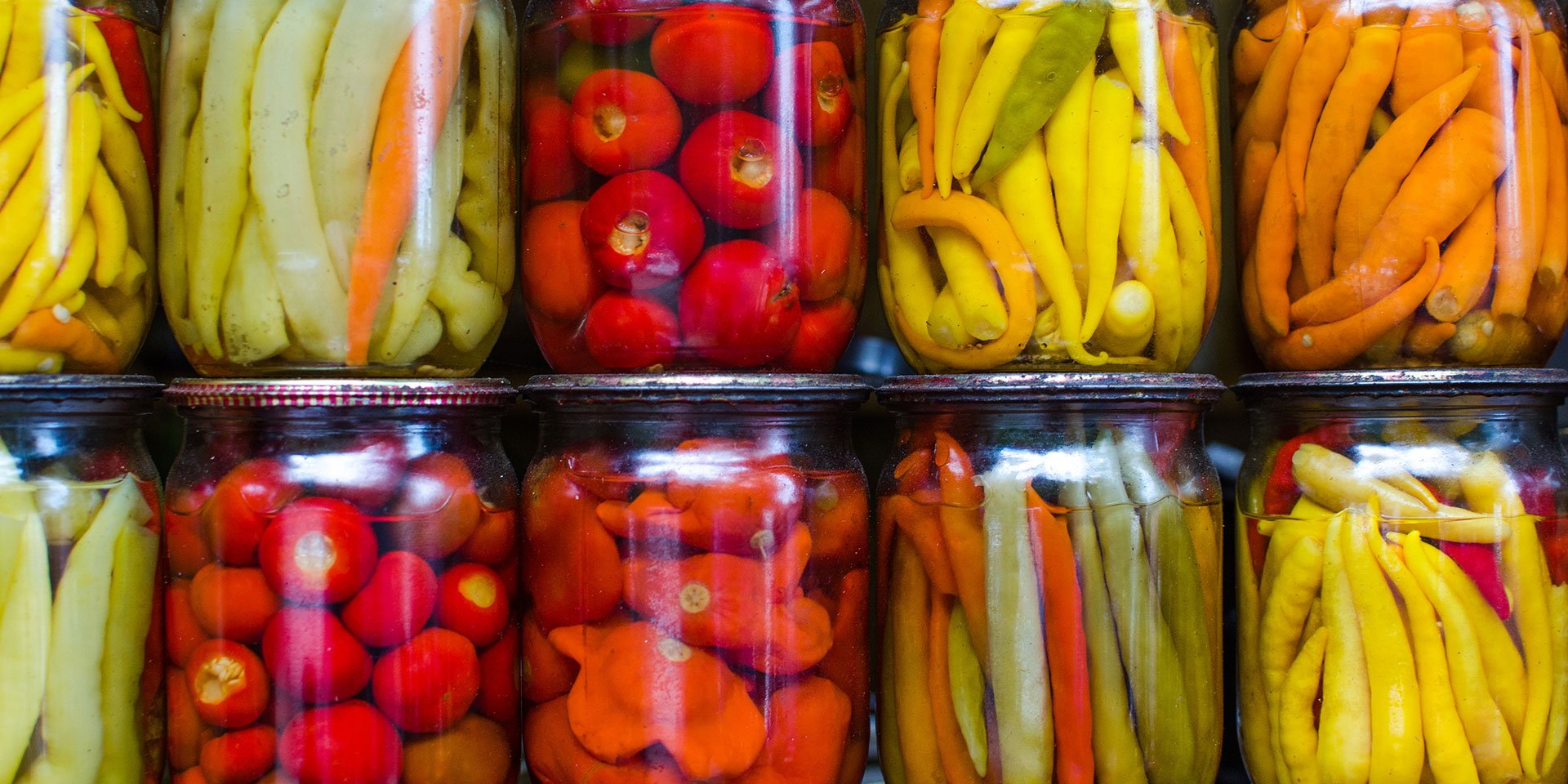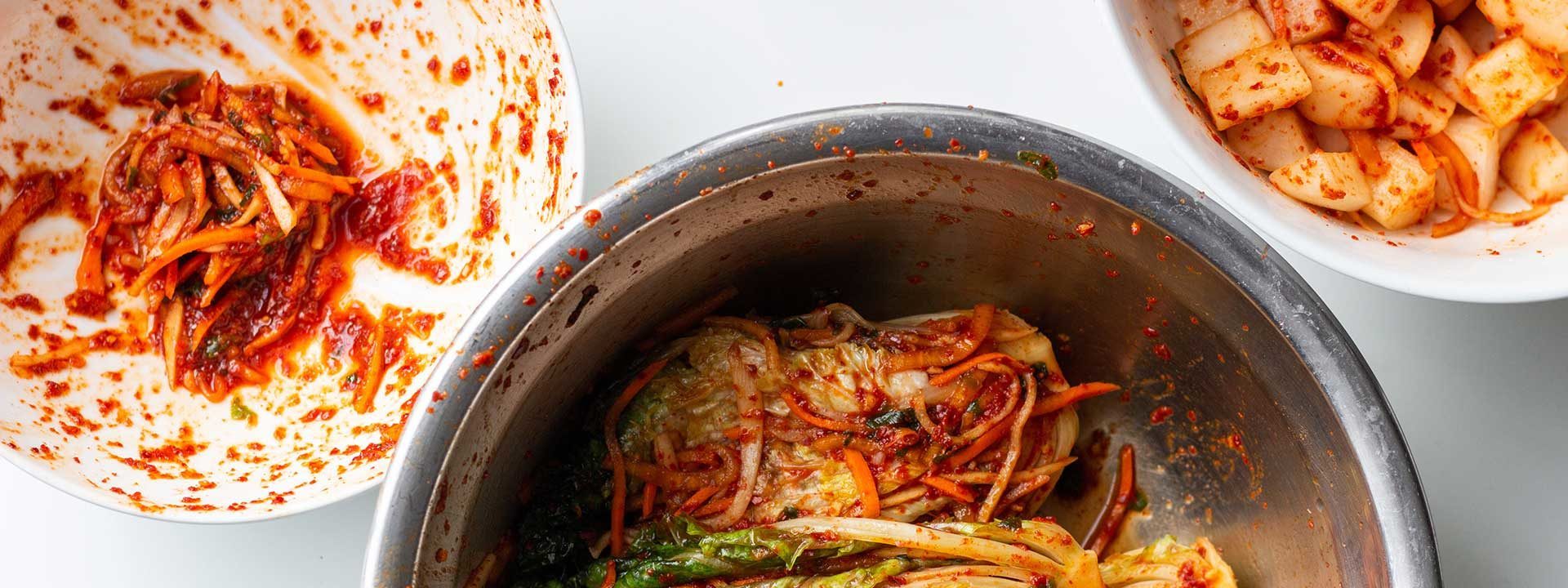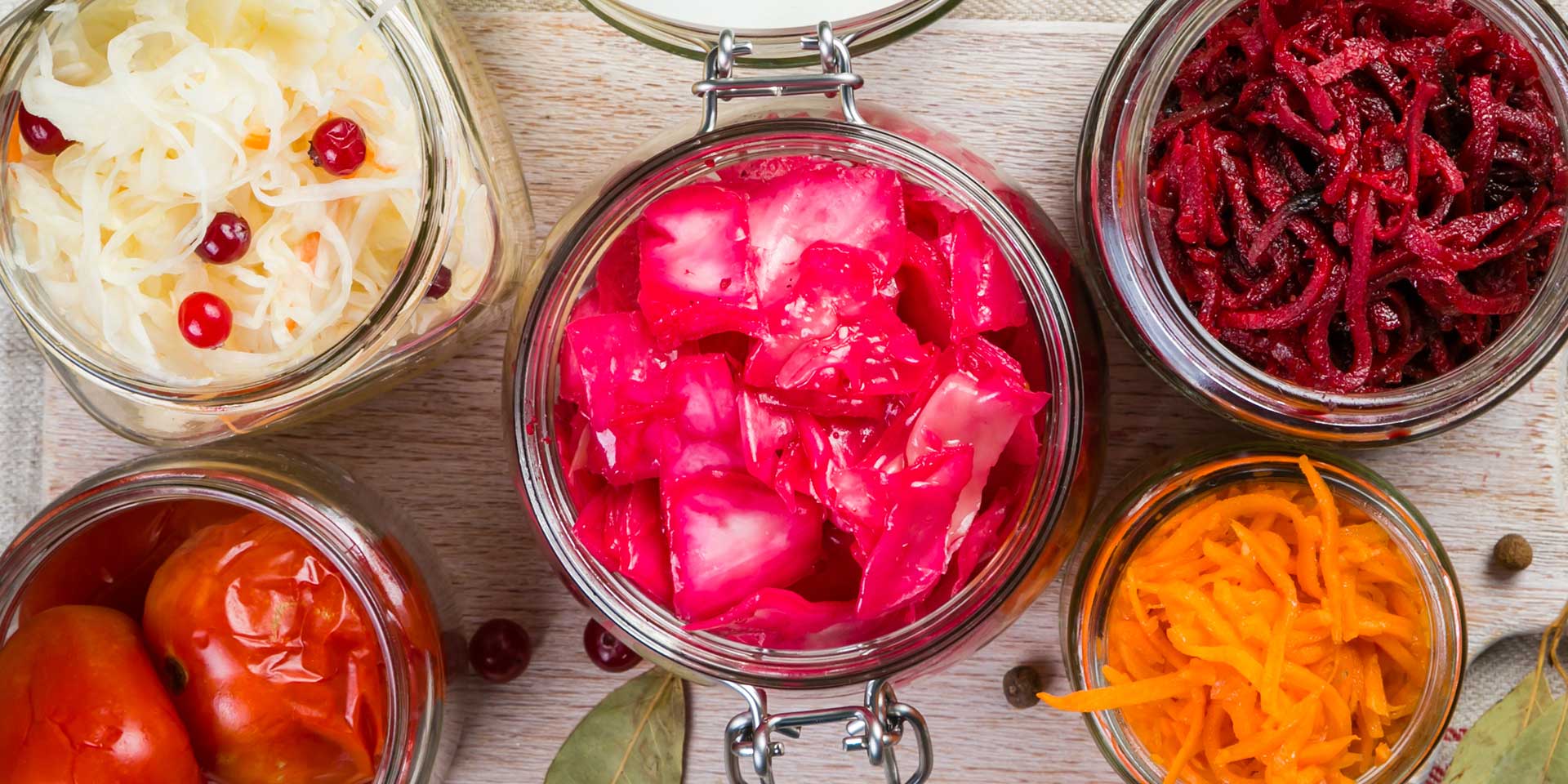Resources to help you pickle, ferment, jam, can and more
Farmers’ markets and CSAs are still exploding with produce, but shoppers are suddenly holding pumpkin spice lattes instead of iced coffees: the end of peak produce is certainly near. How do you bottle sunshine? How do you save some of that harvest for the dreary winter months? You don’t have to go full Ballerina Farm to set yourself up for success: Some preservation techniques can be super simple, and don’t require much, if any, special equipment. If you like things a bit more complicated, we have suggestions for that, too. Here are some books, websites, videos, TikTok accounts and newsletters that FoodPrint recommends for getting into the food preservation groove.
Get canning and jamming
“Put ‘em up! A comprehensive home preserving guide for the creative cook”
This book, by FoodPrint contributor Sherri Brooks Vinton, is one of those tried and true guides that you can keep on your shelf and come back to again and again. It’s written in a clear and approachable way and covers a ton of ground, from pickling to canning to freezing. Part one is chock full of techniques to build the foundation of your knowledge and get you comfortable understanding the difference between, say, a refrigerator pickle and a canned, shelf-stable one. Part two of the book is full of recipes, organized alphabetically by produce item. It’s got plenty of the basics, like canned tomatoes, strawberry jam and pickled cucumbers, but has some jazzier stuff, too, like strawberry vinegar and spiced pear vodka. And this is just one of several books by Vinton that can stay with you on your journey from novice to pro preserver.
National Center for Home Preservation
The National Center for Food Preservation is a comprehensive resource for home preservers, with a special emphasis on food safety. It’s a no-nonsense website that offers up information, resources and recipes for all of the major preservation areas: canning, jamming, pickling, freezing, fermenting, drying etc. It’s extremely scientific and recipes take into account factors like elevation! So those of you preserving in mountainous areas, this one’s for you.
Canning Subreddit
Reddit, a popular social networking site, has a thriving community of passionate home gardeners, cooks and hobbyists who share canning and preservation recipes, resources and advice. Whether you’re wondering what the best recipe is for canning Italian plums, where you can find the best home canning gear or want to ask other home canners what went wrong with your latest water-bath tomatoes, r/Canning is a great place to read about others’ experiences and get answers to your own questions. They’ve also compiled an updated list of safe canning resources so you can be extra sure that your first foray into food preservation won’t be your last.
Dive into the world of fermentation
“Wild Fermentation” and “The Art of Fermentation”
These books have been serving as fermentation bibles for over 20 and over 10 years, respectively, now. Anyone who has had the delight of meeting Sandor Katz in person or has read any of his writings, knows that his enthusiasm about the process of fermenting food is contagious, and his depth of knowledge is unrivaled. Start with “Wild Fermentation,”from 2003, and learn the basics: what is fermentation and how does it work? How can you harness the power of microbes to preserve food and what are the benefits? Then choose your own adventure and teach yourself all about everything from kraut to kimchi to kvass. When you’re ready to dig even deeper, you can move on to his epic ”The Art of Fermentation,” which is as comprehensive as it comes. There isn’t a food in your kitchen that cannot that can’t be fermented and there isn’t a culture that has not made fermentation their own. Between these two books, Katz covers it all.
How to make kimchi
Do you have one head of cabbage? Or half a head leftover from the three meals you cooked that you thought would use up the whole head? Kimchi could be just the right thing to bring everlasting life to your neverending cabbage. Not to mention the scallions, carrots and apples you can “preserve” in the process! New York Times columnist and cookbook author Eric Joonho Kim has this lovely, clear introductory YouTube video (less than 20 minutes) on making three basic kinds of kimchi. It includes technique and recipe with a touch of personal storytelling. And when you’re ready to experiment with other veg, (or, if you’re the sort who prefers a book), there’s “The Kimchi Cookbook,” by Lauryn Chun the founder of Mother-in-Law’s Kimchi.
“Koji Alchemy”
If kraut and kimchi are too mainstream for you, have you considered getting into koji? Koji is mold-based fermentation and while it’s not as widely known in the U.S, authors of this book, Jeremy Umansky and Rich Shih, would like to change that. It involves growing koji spores on rice or other grains and while it is most commonly used to make products like soy sauce, miso and sake, you can also use it to ferment and culture other foods like meats and cheeses, as Umansky does at his innovative deli Larder, in Cleveland. But koji can also play a role in fermenting up food scraps and giving them new, delicious life.
Johnny Kyunghwo
Whether you like to learn about fermentation on Tik Tok or YouTube, the popular and very accessible Johnny Kyunghwo (“the fermentation guy”) is here for you, with tons of detailed and useful cooking advice about all manner of Korean foods, not just those that are pickled and fermented. Got some end of season eggplant you need to use up? He’s got a fermented eggplant video to sort you out. A cucumber with no destination? He’s got a cucumber lime chili soda video for you. He’ll teach you how to make soy sauce using koji spores, and he’ll do it with his incredibly soothing and calm voice that helps you feel like you can become a master, easy peasy.
Shout outs to FoodPrint contributor preservation rockstars:
Our Fermented Lives, book by Julia Skinner. A look at fermentation’s impact on society and culture. With recipes!
Preserving the South, Substack newsletter by April McGreger. A seasonal preserving guide with recipes, techniques, and approaches to preserve the best of regional produce.
Get the latest news from FoodPrint
By subscribing to communications from FoodPrint, you are agreeing to receive emails from us. We promise not to email you too often or sell your information.
Top image credit: by casanisa/ Adobe Stock
More Reading
How to host a sustainable dinner party
December 16, 2025
Tradwives, MAHA Moms and the impacts of "radical homemaking"
December 10, 2025
The FoodPrint guide to beans: Everything you need to know to buy, cook, eat and enjoy them
November 18, 2025
Your guide to buying and preparing a heritage turkey or pastured turkey this Thanksgiving
November 18, 2025
How Miyoko Schinner upped the game for vegan dairy
November 7, 2025
30+ things to do with a can of beans
November 4, 2025
In a beefy moment, beans?
November 4, 2025
Waste not, want not with “Ferment,” a new cookbook by Kenji Morimoto
October 1, 2025
For these cocoa farmers, sustainability and the price of beans are linked
September 17, 2025
You haven’t had wasabi until you’ve had it fresh — and local
September 11, 2025



